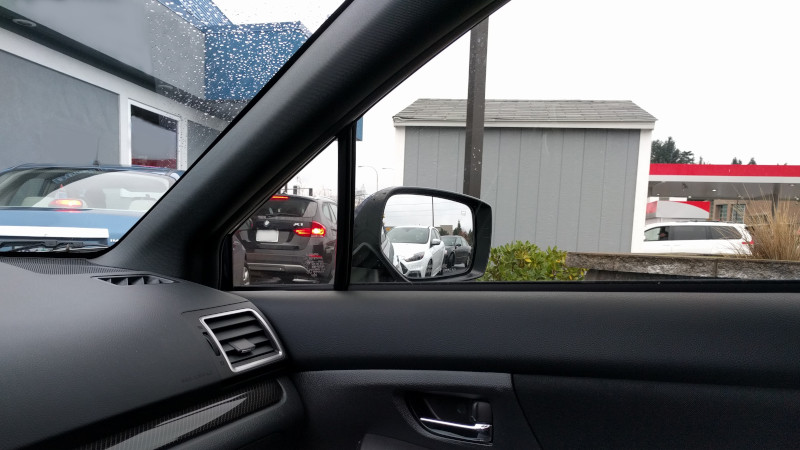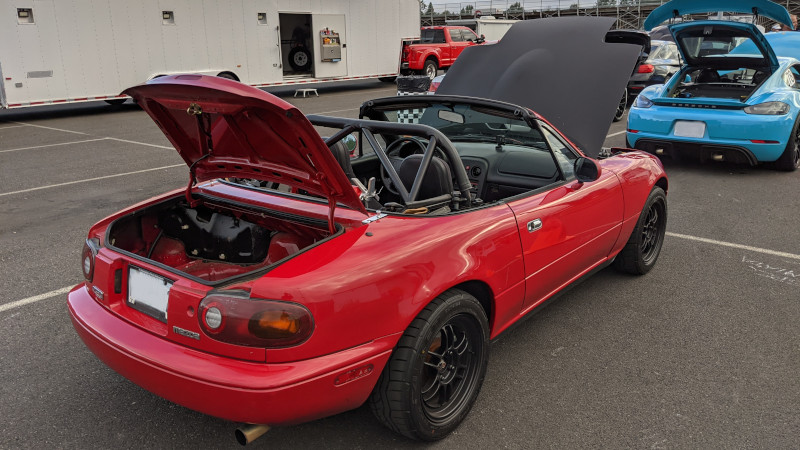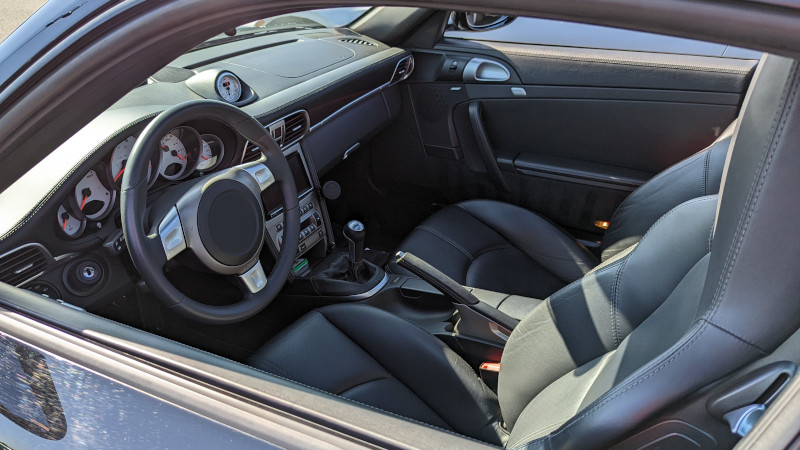Has anyone ever told you that your driving scares them? Driving can be a dangerous activity. You’re commanding a two ton machine on the road with a bunch of strangers, who are also driving two ton machines. You could encounter unexpected obstacles in the road, such as broken car parts, fallen trees, or deer. Here’s how you could be a better driver.
Tips For Safer Driving
Fortunately, there are some easy ways to make driving much safer. If you’ve ever wanted to learn some tips that will make you a better driver, here is a short list to help get you started.
1) Adjust Your Driving Position
Adjusting your seating position is the first thing you should do when you sit in a new vehicle. A proper driving position gives you good control over the steering wheel, the gas pedal, and the brake pedal.
You should be able to reach the top and sides of the steering wheel while maintaining a slight bend at both elbows. This gives you the control and range of motion you need in case you need to input a sudden correction in the steering. For instance, this could happen if the car were to oversteer (the rear slides out), and you need to quickly turn in the opposite direction to maintain control.
Make sure you can maintain a slight bend at the knee while pressing any of the pedals to the floor. If you drive a manual transmission, the clutch pedal often has a bit more travel than the gas or the brake.
Adjust the thigh, back, and lumbar supports according to your comfort preference. Your seat should hold you in place. You shouldn’t feel like you need to support your body with your left foot to keep from sliding out of the seat.
Some newer seats are height adjustable. Sitting higher gives you a better view of the road, and helps shorter drivers to see over the steering wheel more easily.
2) Adjust Your Mirrors

It’s important to adjust your rearview and side mirrors to mitigate any blind spots. On some vehicles, it is possible to eliminate blind spots entirely. Adjust your mirrors after adjusting your seating position.
In your natural seating position, your rearview mirror should give you a clear view out of the rear window. Adjust your side mirrors so you can no longer see the side of your vehicle without moving your body.
Ideally, you want to turn your side mirrors so you can see down the lane next to you and a bit of the next lane over. Being able to see two lanes over helps a lot in large cities. This could prevent a scary situation where someone two lanes over wants the lane between you and them at the same time.
Your rearview and side view mirrors should overlap slightly. You can check your work on the highway as a car passes you. As a car starts to overtake you in an adjacent lane and leaves your rearview mirror, it should start to appear in your side mirror. As it leaves the view of your side mirror, you should see it out of the corner of your eye.
If you can perform this test successfully with a small car like a subcompact hatchback, congratulations! You’ve successfully mitigated your blind spots. It’s important to remember that very small vehicles such as motorcycles could still hide in your blind spots, so you still want to peek over your shoulder before you change lanes.
3) Maintain Situational Awareness
Situational awareness is the constant observation and understanding of the environment around you. In a car, you can maintain situational awareness by looking all around you. Check your mirrors constantly. Note any cars in the vicinity.
Count the cars around you. Note their color, type, make, or model if you can. In an emergency situation, you may not have time to look around to see where you have free space to move out of the way. You may need to swerve or brake suddenly. The more you know about the traffic around you, the better your split second decision making can be.
Teslas have many cameras and radar that will do this for you with cars in close proximity. If you maintain good situational awareness, you will be better than Tesla’s radar. Your eye can see a quarter mile down the road behind you, where the Tesla can’t. This could tell you if someone is doing 100 mph in a 65 zone and you need to stay in your lane until they fly by.
Notice a truck and trailer with a dubious tie down strategy? How about a car with a wobbly wheel or bald tires? This information is helpful to you as a driver. You can do your best to stay out of their way and give yourself enough room in case something goes wrong with their vehicle.
4) Look Far Ahead

Good vision is critical to good driving. Many accidents can be avoided simply by looking far down the road. The more you see, the longer you have to react.
If you’re in a corner, look through the corner as far ahead as you can. You may spot a deer, some debris, or perhaps a slow cyclist in the middle of the road. It feels a bit unnatural at first to turn your head in a corner, but this is how race car drivers are able to drive so fast without crashing. If you only see the stretch of road 10 feet in front of the car, you won’t be able to stop in time.
When you hear a driving instructor say “eyes up” or “look ahead”, they mean you should take in everything ahead of you, not just the farthest point. Sweep your eyes back and forth from the farthest point you can see to directly where you’re headed. Note the condition of the driving surface. Is there broken pavement? Do you see a shiny spot where there could be ice or standing water? Many factors like these affect your ideal speed and lane positioning.
5) Anticipate Other Drivers
Other drivers may give you clues about their intentions. The longer you drive, the easier it is to pick up on these clues. The process of positioning your car safely around other drivers is called defensive driving.
You’re in the fast lane about to overtake a car. If you notice them move toward your lane, be ready for them to suddenly change lanes into your path; they may not see you.
Sometimes you can see drivers’ eyes and hands through their side mirror. This is a very good indication of what their intentions are. Many drivers shift their hands or look out their side mirror when they want to change lanes, even if they haven’t started changing lanes yet. If you see these behaviors, it may be a good idea to complete your pass as quickly as possible, or wait for them to go ahead. This will depend on the individual situation, so use your best judgment here.
The smaller your vehicle is, the less likely it is that people will see you. For instance, Mazda MX-5 Miatas are both short and low to the ground. It is extremely easy for a car like that to hide in a blind spot, especially while driving near an SUV or pickup truck.
With small cars and motorcycles, sometimes it’s best to assume people don’t know you’re there. Always have an exit strategy with these vehicles, where you can bail over to the next lane or the shoulder if someone starts to move into your lane. Make sure your horn works in case you need to give a short blast to make your presence known.
6) Don’t Follow too Closely

Following closely is a great way to end up in an accident where you will likely be considered at fault. Following closely leaves you less time to react, less time to stop, and limits your vision of the road ahead.
Always maintain a safe following distance of several car lengths. A close following distance will not get you to your destination any faster. A safe following distance also allows people to change lanes more easily, which can mitigate traffic congestion.
7) Keep Moving
The human eye notices movement very easily. If you find yourself alongside another vehicle, try not to drive at the same exact speed, and don’t hang out in their blind spot. Sometimes people forget you’re there and may try to change lanes into you.
8) Understand Your Vehicle

Always try to familiarize yourself with your vehicle and how it handles near its limits. How hard can you brake? What does the ABS feel like? How much body roll can you expect, and when do the tires start to lose grip? How does this change in inclement weather?
The more nimble your car, the more options you may have if traffic suddenly comes to a standstill. If your car has a long stopping distance, make sure to leave even more space between you and the car ahead.
Not sure where the limits are? Why not try an autocross event to hone your skills and learn more about your car?
9) Keep Up on Maintenance
Make sure you follow your manufacturer’s recommended service interval for critical components such as brakes, tires, wheel bearings, and suspension. Keeping your vehicle in roadworthy shape is a great way to stay safe on the road. This information can be found in the owner’s manual or maintenance guide.
Sometimes it’s important to change brakes or tires a little more frequently. Some manufacturers provide a “severe use” schedule. Follow the severe use schedule when you drive over many mountain passes or find yourself wearing through these components more quickly than average. It’s a great idea to get your vehicle inspected every few months to make sure it’s in good order.
Conclusion
Driving is a lifelong skill. Even for veteran drivers, there are many ways you can improve your judgment, vision, and car control with a little practice. This list is not an exhaustive one, so if you have any other tips that may help fellow drivers, feel free to leave them in the comments below.
